Meet the team
Hi there,
so there is a core team of three of us who are making ‘Digitopia: The Graphic Novel’, we’re currently working away at making the web comic, the idea being that incrementally the web comic will build up into what can become ‘Digitopia: The Graphic Novel’
So who are we? I thought it’d be easier to ask a few questions to find out about the team.
- Name
Farhan Qureshi
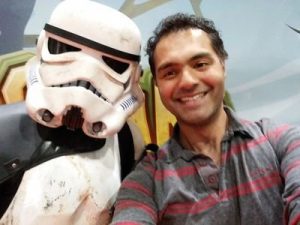
- Location
London, UK - Role on project
Writer, (I’m also the co Art Director, Publisher, Web Developer, meeting organiser, marketing manager and anything else that needs to be done 🙂 - How did you get involved in the comic?
I wrote the original script back in 2009 to 2011, I’ve had this idea written for a while, in 2017 I decided that I wanted to make it into a graphic novel and set out to find a team who could make this a reality.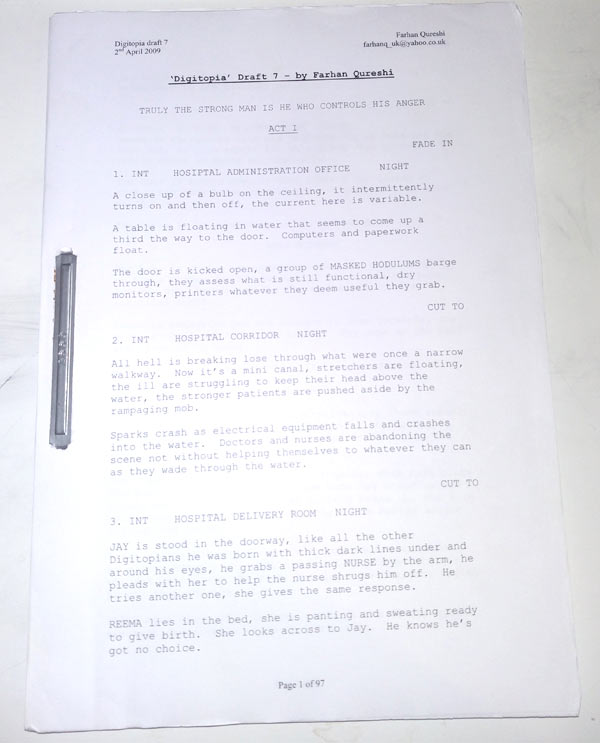
Here is a draft I put together in 2009 – you can tell I hadn’t become a dad back then…
- Tell us about your specific area of work on the project.
So I kind of see my role as trying to keep the story flowing as best as I can, I ask the questions around writing techniques, is the characterisation coming through, is the plot working, are we keeping the reader engaged in the story.More generally though, I am tending to do everything that a Producer would traditionally do in a film, like all the behind the scenes work, building a team, setting and trying to keep us on schedule, organise times to meet (believe me, when we are spread out over three continents South America, Europe and Australasia that is not easy to do), building websites and figuring out WordPress themes and plugins, as well as research and planning crowd funding projects – it’s a wide brief. - How are you using your skills differently in this comic book?
I have worked as a CGI artist for the past thirteen years, across film, games, TV, live events and VR – I’ve produced and directed short films (both live action and animation). I thought at the start that making a comic book would be a simpler process than making an animation, but in practice although there are fewer moving parts actually it is just as involved.
This is my first comic book (well first comic book as what can loosely be described as a grown up) that I’m doing, I am learning as I go along, I’m getting a lot of help from the team, they are guiding me along the process.As technology has moved on a lot, you’d have thought it’d be a simpler process – but all these communication channels and cloud sharing platforms require their own system admin, so I am learning a whole new set of tools.I’m simultaneously blogging about the making of the web comic on my own blog here – http://www.digitopiafilm.com/category/writing/ - What’s your favourite part of working with the team?
I really enjoy our meetings, they are kind of surreal in their own way – any creative meeting always is. We meet on Skype, typically at a weekly rate, the timings are normally very early in the morning in Buenos Aires, in the middle of the afternoon in London and late at night in Melbourne (there’s a thirteen hour time difference during the summer time between Buenos Aires and Melbourne – I have no idea if that changes for daylight savings hour – I’ll find out in a few months if that gap changes).
Because of these timings Seb is having his morning wake up coffee at 8am, on the other side some thirteen hours apart, Simon has his bottle of beer parked on his screen – the first time this happened, it took Seb a few minutes to figure it out, he thought Simon was drinking beer at 8 am in the morning, it was very funny.
We tend to always have fun on our calls, we’re all very passionate and care about the art a log, when we disagree (which is about three times every meeting) we disagree in the most polite ways and always look to find out what the best solution for the comic book is.I think it’s a great working relationship the three of us have – I hope we can continue to work so well together to get this comic finished and collaborate again after this. - What’s your favourite comic growing up?
I was always a Hulk fan, I don’t know what it was that drew me to this character, I think it’s because it was so primal, the writing was about anger and not being able to control anger.
Though I wouldn’t have know it at that age, the Hulk and Bruce Banner characters represented perfect juxtaposition between each other and Hulk was an anti-hero always destined to fail.
That and he was big, green and smashed everything up in sight. - Who is your favourite comic book writer or artist?
My favourite comic book writer and artist is Mike Mignola, of Hellboy fame. I had always liked comic books, but it wasn’t till I saw my first edition of Hellboy that I totally fell in love with the medium.
Mike Mignola did something with Hellboy that I had never seen before. The artwork was so different to the staple of Marvel comics that my local newsagent could supply. The colours weren’t glossy like I’d got used to seeing in Marvel, instead he used this concept of stark contrast and a limited palette which made the action stand out. I loved the use of his background and environment work, it it is very minimalist and everything is so well framed only adding enough background that is actually necessary.
The stories too are quite amazing, it’s not always trying to save the world from some evil megalomaniac (I can’t tell you how long I’ve been waiting to write a blog post with the word megalomaniac in it – thanks spell check), his work dealt with the supernatural and things that couldn’t be defeated by sheer brute strength and power, in fact Hellboy doesn’t always win, which is something that I like too. - When did you write/draw your first comic and what was it about?
So I actually recently had a clear out of my old things and found an early anthology I put together, I think I must have been eight years old at the time. It seems like I was putting together a weekly style magazine with several comic strips which could be strung together.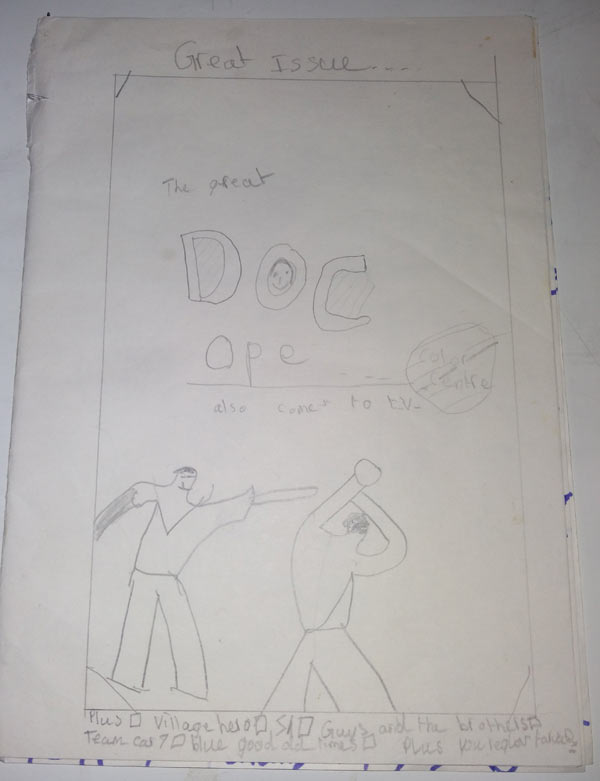
So here it is, my first comic book – the great thing about writing and drawing at that age is that you just clearly didn’t care about what others thought – a lesson there for my grown up self.
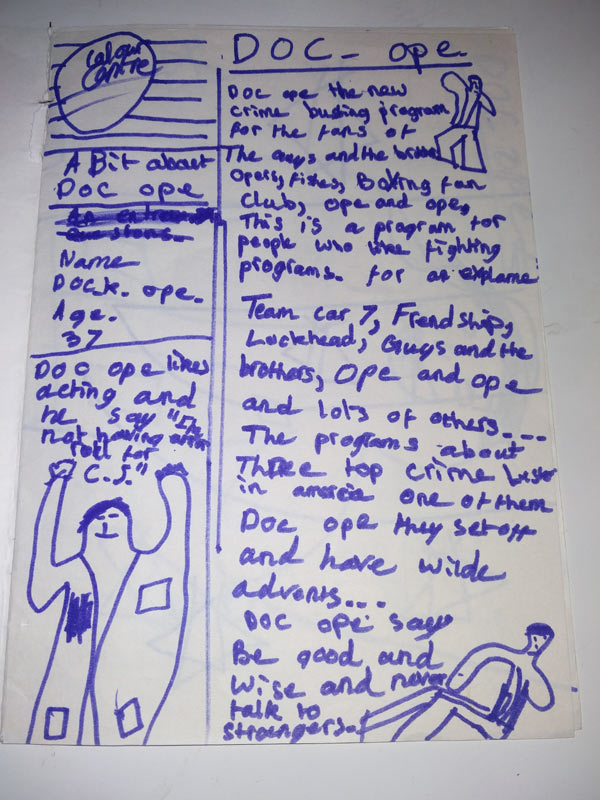
Although I wouldn’t have know this, this way my first editorial introducing the reader (I say reader as I would have represented the entire readership of this magazine – until now) to the story.
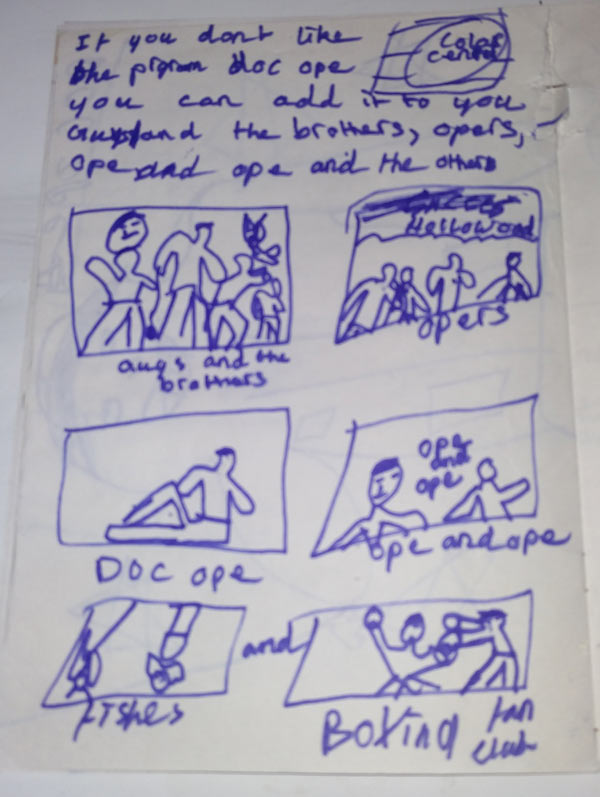
And here was the full list of stories the (lucky) reader would have been letting themselves in for, I mean enjoying…
- Did you always want to work in comics?
I always wanted to and did work in animation a lot. While working in animation I found the concept art and story-boarding teams to be some of the most interesting teams I’d work with.
I really enjoy the art of storytelling. I think comic books are in some ways a natural relative to story-boarding, although the flow is different, we are essentially trying to tell a story in sequential images, using concepts of composition, framing, characterisation and colour to tell a story.
I totally love it, if one of the by products of finishing this project involves a full time writing or art direction role in comic books that’d be a pretty positive outcome. - What advice would you give to someone who is trying to achieve a successful career in comics?
One of the best pieces of advice I got about work was from watching a Pixar making of video, in it one of the directors of Pixar, I think it may have been wither Ed Catmull or Andrew Stanton (I’ll have to rewatch the video) said two things that have stayed with me and influenced heavily how I work/put together these kinds of projects- Always try to work with people who are better than you are – this is how you will grow and produce better work. My take on this is also not to try to prove you are better than anyone else in the team. You have your own contribution to make to the team and the other team members, even though you may perceive them to be better than you, they are also learning off you.
- There’s a real worry among the artistic and creative community of always wanting to show your best work. While in public this is good, in the development phase of a project don’t worry about your work always having to be perfect before you present it to others in your team.For me, this means that you can show ideas quicker and rapidly iterate (improve upon them), find out quickly if something works or doesn’t work – don’t be afraid of showing things whether you think may work or may not work, sketching drawings, putting forth concepts is the fastest way to find out what does work.
- Tell us your website address and the best way to follow you on social media.
Obviously this blog is the best way to find out. I also run the parent blog to this one, http://www.digitopiafilm.com and I’m most active on my Twitter account “farhanq_uk, if you want to follow me the link is here https://twitter.com/farhanq_uk 🙂
- Name
Sebastián Píriz
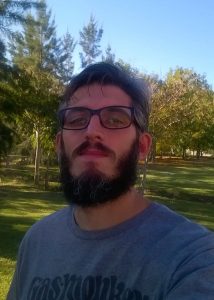
- Location
Buenos Aires, Argentina - Role on project
Artist - How did you get involved in the comic?
Through a Facebook artist search - Tell us about your specific area of work on the project.
I’m responsible of the storytelling, its not just drawing the stuff but looking for the best page design, camera angle, right action, etc. - How are you using your skills differently in this comic book?
In this work I’m working closely with the writer and colourist, after I sent the layouts we discuss every page - What’s your favourite part of working with the team?
They are really willing to listen my infinite comic theory gibberish when we discuss the pages - What’s your favourite comic growing up?
I began to properly read comics with the late 90s X-men. - Who is your favourite comic book writer or artist?
- When did you write/draw your first comic and what was it about?
I was 12, the summer between elementary and high school (its different here) The story: 3 friends are transported to an alien city and they have to find the way to get back home. Now that I think it its like the wizard of Oz but with Aliens instead of magic stuff - Did you always want to work in comics?
not really, I always knew I wanted to draw, but it was the first comic I saw drawn by Joe Madureira that made me click into comics (Uncanny X-Men #370 from July 1999, I googled for it) - What advice would you give to someone who is trying to achieve a successful career in comics?
1-Have fun.
2-dont give up.
3- look for critic.
4- practice and improve on your mistakes (mostly refer to 3 to know which mistakes) - Tell us your website address and the best way to follow you on social media.
sebasp.deviantart.com
@sebastianpiriz on Twitter
- Name
Simon Robins
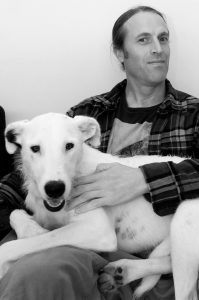
- Location
Melbourne, Australia - Role on project
Colourist, Letterer, Associate Art Director - How did you get involved in the comic?
I found out about the project through either the Digital Webbing or PencilJack website, I can’t remember exactly which on it was now. I filled out the application form on the Digitopia website and was fortunate enough to be selected to be part of the team. - Tell us about your specific area of work on the project.
As an associate art director I have been involved in editing the initial script and am working closely with Farhan to develop a consistent aesthetic for the comic. As well as this I have designed the title logo for the series. I am also responsible for the colour palette selection colouring of the pages and all of the graphic design and lettering throughout the series - How are you using your skills differently in this comic book?
Coming from a graphic design & photography background I have that my skill set is perfectly suited to my comic book work. However, these skills are being applied differently to this project as it is not a commercial or corporate design job, it is totally creative design for storytelling purposes. I love this work and my skills are expanding and developing as I am working. - What’s your favourite part of working with the team?
I love how focused the team is on the integrity and depth of the story. Our collaboration is open and everyone is treated as an equal. We all have input on all aspects of the comic and it is this cross-pollination of ideas and talent that is truly exciting to be part of. - What’s your favourite comic growing up?
I began to properly read comics with the late 90s X-men. - Who is your favourite comic book writer or artist?
As a child I grew up on 2000AD, Spiderman and Batman. It wouldn’t feel right naming one particular comic as a favourite, that’s like naming one of your children as favourite. However some of the comics that had a huge impact on my ongoing love of comics and my desire to be a comic book creator are Slaine / ABC Warriors (Simon Bisley runs), Judge Dredd in Oz, Sandman, Bone, Invisibles, Akira and Battle Angel Alita. - When did you write/draw your first comic and what was it about?
I drew my first comic when I was about 7 and it was a weird mashup of pirates and Ghostbusters. I am in the process of writing my first comic now but have done the typical first writer mistake of making it an epic 200pg saga. More realistically I am also working on a 4pg Future Shock submission with my brother. - Who is your favourite comic book writer or artist?
Currently my favourite writer is Jonathan Hickman and artist would be James Stokoe. But these change regularly too. - Did you always want to work in comics?
Honestly I didn’t think I ever could. I never thought I was a good enough artist and I didn’t realise there were other careers in comics I could pursue such as colourist and letterer . Now I am working hard to make a transition to having a full-time career in comics, it will take time but I am in for the long haul. - What advice would you give to someone who is trying to achieve a successful career in comics?
Immerse yourself in not only the comics but also in the comics community. Find what area interests you and practice, practice, practice. The community is an invaluable resource for inspiration and also critique and support. It is through that community you will get work so be active, positive and interested. Of course you need the skills to produce the work, but if you can’t/won’t communicate with your peers then you are limiting your prospects immensely. - Tell us your website address and the best way to follow you on social media.
I have a new Artstation profile you can see my comic work on at https://www.artstation.com/simonrobins and my Instagram is https://www.instagram.com/bastard_cut/ which has a bunch of comic, calligraphy, design and personal photos on it.